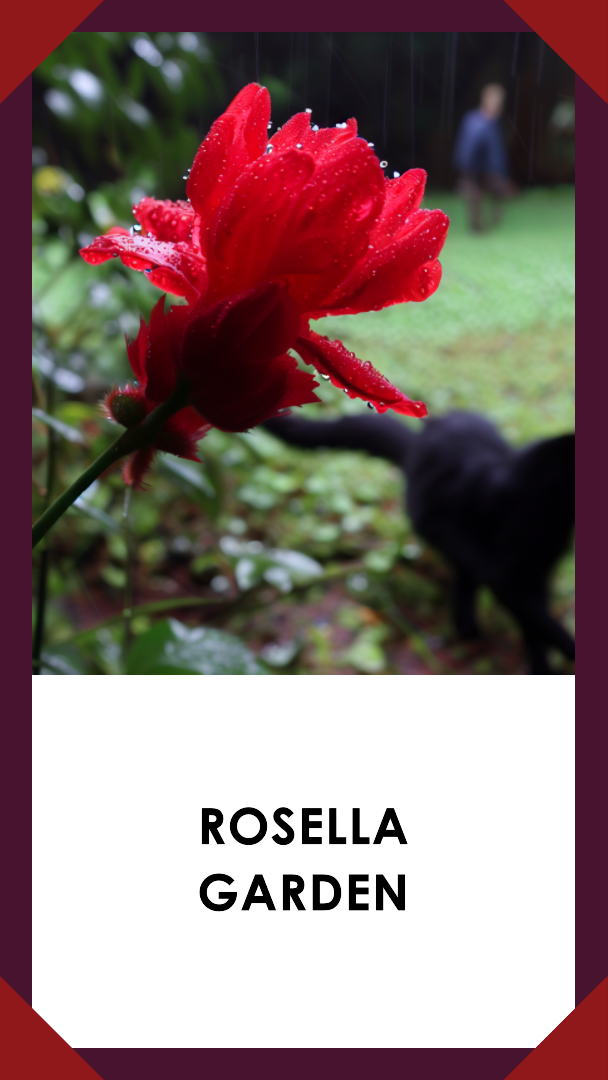In the lush tapestry of nature, the rosella plant (Hibiscus sabdariffa) stands out with its vibrant foliage, captivating flowers, and a treasure trove of culinary and medicinal delights. Native to West Africa, this annual shrub offers more than just visual appeal; it brings to the table a burst of flavor, a wealth of nutrients, and a legacy of folk medicine. In this OrganicMotion article, we dive into the world of rosella, exploring its description, cultivation, nutritional value, and myriad uses that make it a cherished addition to your garden and kitchen.
The Enchanting Appearance of Rosella
Rosella is an attractive annual shrub that grows to a height of 2-2.5 meters, boasting bushy foliage and elegant white to pale yellow flowers. The flowers, with their characteristic dark red spot at the base of each petal, add a touch of elegance to the plant. The leaves, arranged alternately on the stems, showcase the kinship of rosella with the hibiscus family.
A Multifunctional Marvel in Your Garden
Beyond its aesthetic charm, rosella offers a range of uses that enrich your garden and lifestyle:
- Edible Leaves: The leaves are cherished by chickens and can serve as a valuable addition to your poultry’s diet.
- Seed Saving: Rosella is a wonderful plant for seed saving, allowing you to preserve its legacy and share its delights with others.
- Attraction for Wildlife: The plant attracts birds and bees, promoting pollination and supporting a thriving ecosystem.
- Bast Fiber Production: The stems of rosella are cultivated for the production of bast fiber, which can be used as a substitute for jute in making burlap.
Nutritional Value and Healing Properties
Rosella isn’t just a treat for the senses; it’s a nutritional powerhouse and a repository of traditional healing:
- Rich in Nutrients: Rosella flowers are loaded with vitamin C, vitamin D, B1, B2, calcium, magnesium, omega-3, and essential acids.
- Medicinal Benefits: In traditional medicine, rosella is known to enhance stamina, detoxify the body, lower blood pressure, and alleviate coughs and sore throats. It can also aid in reducing nicotine dependence for ex-smokers.
Cultivation and Growth
Cultivating rosella requires attention and care, yielding a rewarding harvest:
- Planting: Begin by planting hibiscus seeds in a pot, then transplant the seedlings into the garden when they’re 8-10cm tall. Keep the plants free of weeds, mulched, and well-watered.
- Flower to Fruit Transformation: Patience is rewarded as the flowers mature into fleshy, bright red fruits over a span of six months. The plant usually produces a more substantial harvest after its second flowering in Autumn.
Culinary Adventures with Rosella
The culinary uses of rosella are as diverse as they are delicious:
- Culinary Color and Flavor: Both the flowers and fruits add color and flavor to jams, jellies, desserts, fruit teas, sauces, and more.
- Edible Leaves: Rosella leaves, known as red sorrel, can be consumed as a side dish, salad, or cooked as a spicy spinach substitute.
- Creative Cuisine: Rosella’s preserved flowers in syrup or liquid make for a unique and decorative addition to cocktails, wines, and desserts.
- Seed Utilization: The seeds can be roasted and ground into flour or fermented into a Sudanese meat substitute known as ‘furundu.’
True Gem of Nature
Rosella is a true gem of nature, offering an array of benefits from its ornamental beauty to its nutritional richness and holistic healing properties. By embracing rosella in your garden and kitchen, you’re connecting with a plant that enriches your culinary creations, nourishes your body, and adds a touch of vibrancy to your surroundings. Embrace the flavors, colors, and healthful qualities of rosella as you embark on a journey of exploration, taste, and well-being.
